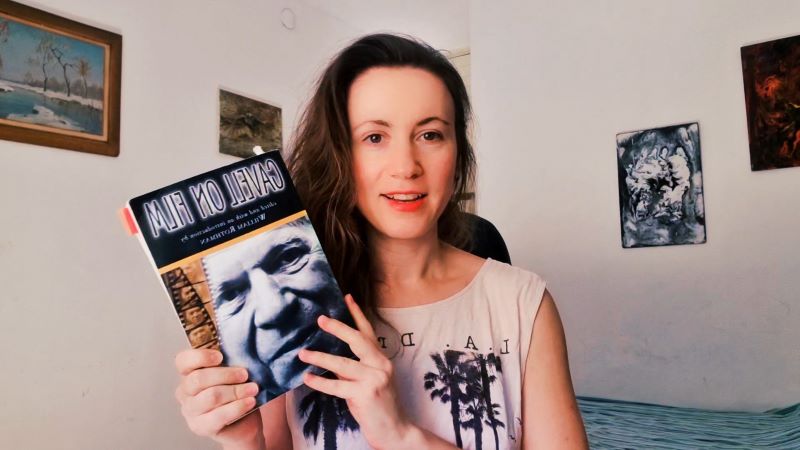
I read Cavell on film, a book by a philosopher who put cinema at the center of his interests. From this rare book I wrote out in simple words the main ideas that wittily and well describe the essence of video art. I have transposed all the ideas to the topic of blogging as I am interested in it.
1) Things and their projections in a movie are meta-objects. An object in life does not equal a filmed object. I am the character in the video, not literally me. In the video it is already her (not me).
2) Fantasy should still have a glimmer of reality, so that the viewer can get into it. For example, I make a fantasy video, but the physical or other laws should be familiar to people.
3) Objects of reality that change properties in the video — drinking from a shoe, eating with a cup, etc.
4) Things in the video also play roles — butaphoria. Rain could be water from a faucet. We can’t see beyond the frame, so we make up what we are shown.
5) People make duplicates of reality — videos, photos… and then they look at it. And they like it.
6) Am I a man or a woman? Am I alive or dead? (How do I know that?) After all, in a movie, a man can play a woman. A living one to play an undead one.
7) Video like any art is an object of the viewer’s interpretation.
8) Mass television and youtube — has captured attention. But why? And whose attention? In an elitist culture, people don’t let their kids watch TV or sit on social media, no matter the content. What’s the reason? People are afraid of the internet and see it as addictive.
9) Difference between movies and youtube: in movies we see things, and youtube / tv we monitor things in real time / broadcast ourselves. So there is serialization (game streams, sitcoms, sports, talk shows, elections, weather). YouTube gives a sense of company, that you’re not alone.
10) Why is the weather forecast given a separate program on TV, while the value of bitcoin is just announced with a line at the bottom? Is weather more visual and understandable to a general audience, is it a popular topic of discussion between strangers, or do we like to think we can foresee the future?
11) Video — it is difficult to define what a movie is. It is a complex object (montage, sounds, pictures, plot…).
12) An artist makes the invisible visible (does not copy reality, and does not show what is already visible, but shows what was not visible). Therefore, before the advent of cameras, painted realism?
13) Theater is a presentation to the viewer of possible relationships between people.
14) At the same time, cinema is a conflict between art and the everyday.
15) Videos are created to cater to the tastes of a wide audience.
16) The camera changes people’s behavior… it’s like Descartes’ “I think” each time it confirms the existence of the object of study, and the capture of the camera itself confirms existence. But every time the camera catches movement, the natural human desire is to hide that movement.

